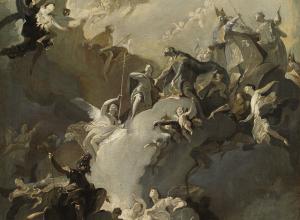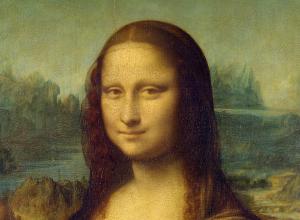Critiquing the performative nature of high society, Marisol Escobar's "The Party" (1965-66), shows that despite looking the part, it can still be lonely at the top.
Smarthistory
Art historians use careful observation and description to begin their analyses of a work of art. Here, Dr. Beth Harris and Dr. Steven Zucker take a close look at Henry Moore's sinuous…
Painted for the Hall of Negro Life at the Texas Centennial Exposition, Aaron Douglas's Aspiration (1936) shows a way for African Americans to forge a hopeful future.
Thomas Hovenden's The Last Moments of John Brown (c. 1884) captures the complex and controversial place John Brown holds in American history.
Masami Teraoka uses a traditional Japanese art form to confront the AIDS crisis in American Kabuki (1986).
Reginald Marsh captures the excitement of 1930's Coney Island in his dramatic depiction of a steeplechase, Wooden Horses (1936). Curator Erin Monroe discusses this moment in American history…
Robert Rauschenberg was in the middle of creating this portrait of John F. Kennedy when the president was assassinated. Hear Steven Zucker and Patricia Hickson, Emily Hall Tremaine…
Dr. Steven Zucker and Dr. Beth Harris discuss Sandro Botticelli's Birth of Venus (c. 1485) one of the most popular works at the Uffizi Gallery in Florence.































